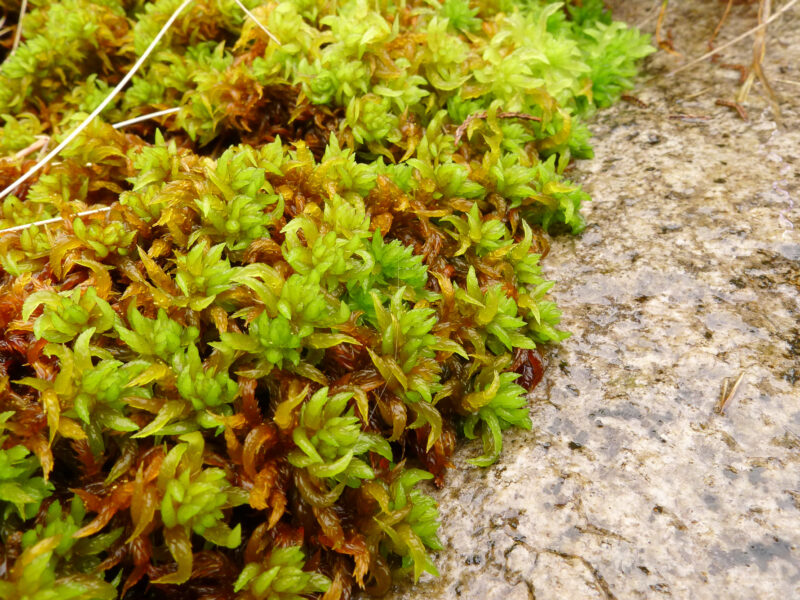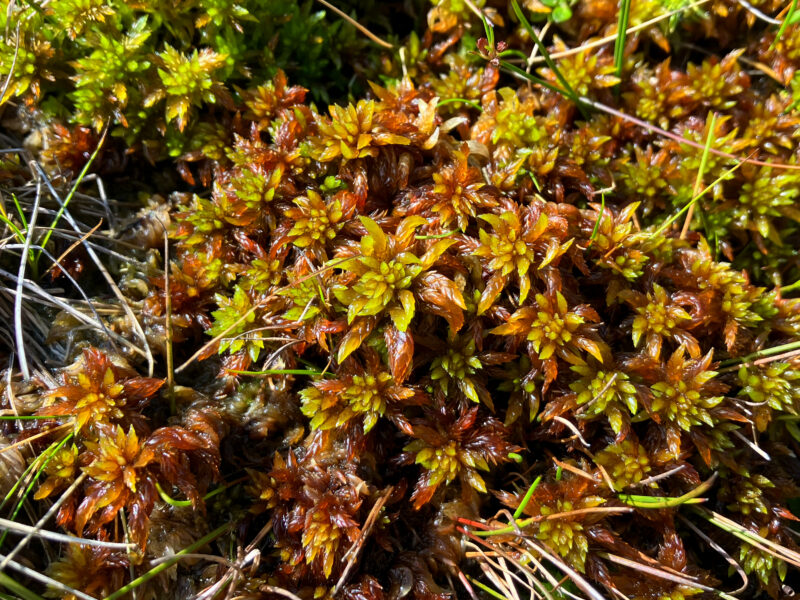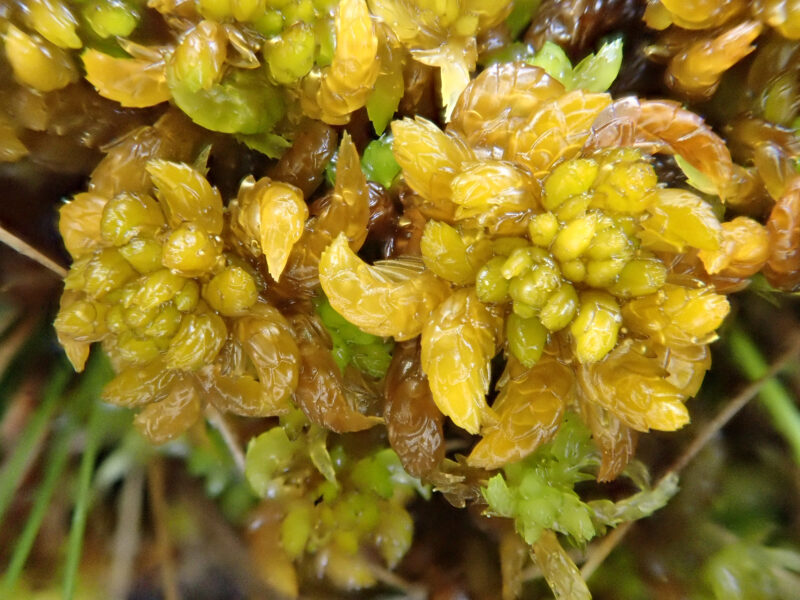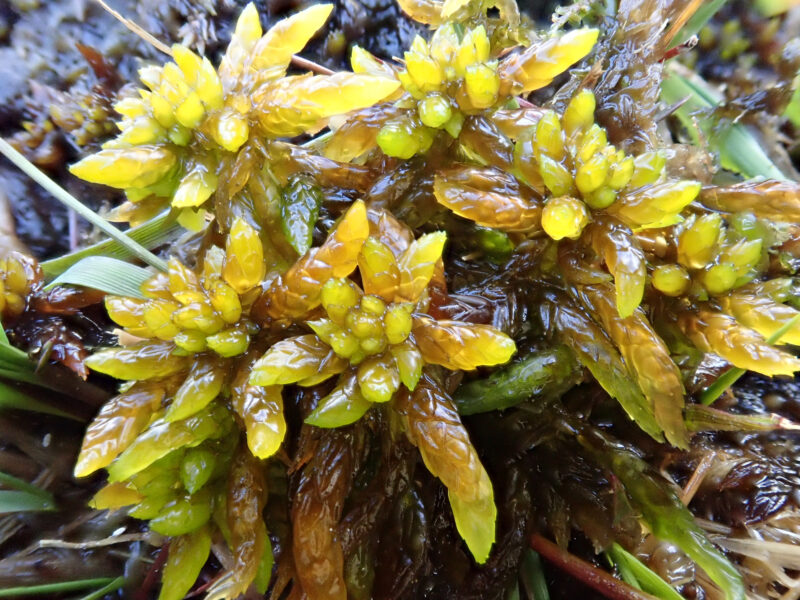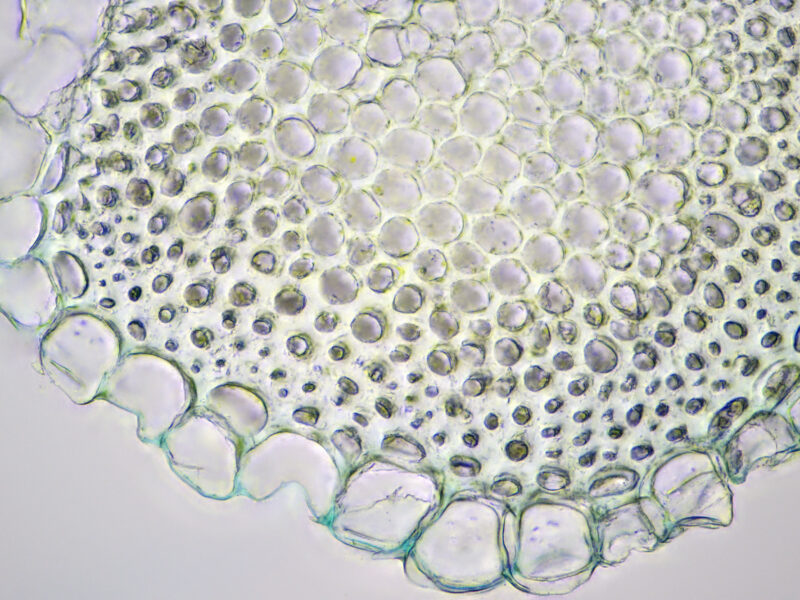Identification notes
One of the commonest of our Sphagnum species, S. auriculatum is also unfortunately one of the most variable in appearance. Forms with obviously curved branches (the ‘cow horns’ of its English name) are readily placed in Sphagnum Section Subsecunda, which also includes S. inundatum. S. contortum, S. subsecundum and the rare S. platyphyllum are the other three.
Atypical plants frequently occur and may be confused with S. inundatum and even S. palustre. S. inundatum also belongs in Section Subsecunda, the five members of which all have a very distinct but narrow stem cortex 1-3 cells thick and barrel-shaped chlorocysts (green cells, seen in section) which are narrowly exposed on the convex side of the branch leaf. If hyalocysts (hyaline cells) have pores, they are small (<12um diameter), ringed and numerous. Typical S. inundatum is a prickly-looking plant, because of the asymmetry of the branch leaves. If there is any doubt, it is worth counting the average number of branches per fascicle: typically 3-4 in S. auriculatum and 4-6 in S. inundatum. The stem leaves also help to differentiate them: in S. auriculatum they are relatively large, usually between 1.3 and 2.0 mm long; those of S. inundatum are normally 1.3 mm long or less.
Robust, forms of S. auriculatum with straight branches can also be mistaken for S. palustre in the field, but a quick check of the stem cross-section in the field will settle matters. S. palustre, being in Sphagnum Section Sphagnum, has a much wider stem cortex formed of 3-4 layers of large hyaline cells. This cortex occupies 1/3 to 1/2 of the diameter of the stem. In the field, snap a plant to reveal the stem. Squeeze the stem (to expel water from the cortex) and examine it with a hand-lens.
Read the Field Guide account
